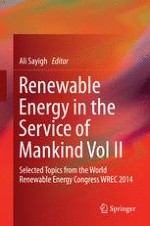2016 | OriginalPaper | Chapter
73. Experimental Investigation of the Effect of Solar Collector’s Inclination Angle on the Generation of Thermosiphonic Flow
Authors : G. P. Panayiotou, S. A. Kalogirou, G. A. Florides, G. Roditis, N. Katsellis, A. Constantinou, P. Kyriakou, Y. Vasiades, T. Parisis, A. Michaelides, J. E. Nielsen
Published in: Renewable Energy in the Service of Mankind Vol II
Publisher: Springer International Publishing
Activate our intelligent search to find suitable subject content or patents.
Select sections of text to find matching patents with Artificial Intelligence. powered by
Select sections of text to find additional relevant content using AI-assisted search. powered by
